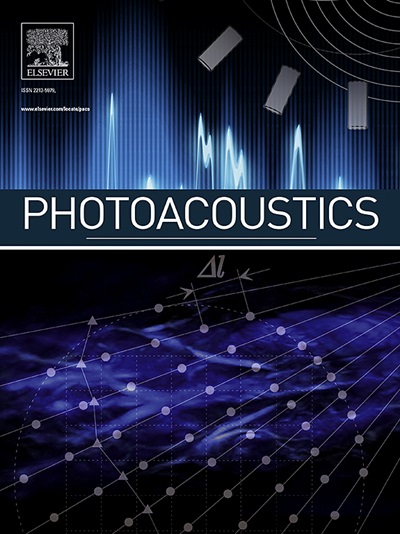Quantitative evaluation of microenvironmental changes and efficacy of cupping therapy under different pressures based on photoacoustic imaging
IF 7.1
1区 医学
Q1 ENGINEERING, BIOMEDICAL
引用次数: 0
Abstract
Cupping therapy, a traditional Chinese medicinal practice, has been subjected to scientific scrutiny to validate its effects on local tissue microenvironments. This study provides a quantitative assessment of cupping therapy at different negative pressures using photoacoustic imaging. Low-pressure cupping (-20 kPa) significantly improved local blood circulation, evidenced by increased hemoglobin oxygen saturation and vessel dilation that normalized within two hours. In contrast, high-pressure cupping (-30 kPa) led to capillary rupture, bleeding, and tissue edema, similar to the clinical presentation of cupping bruises. Additionally, our research unveiled that −20 kPa cupping expedited the clearance of indocyanine green dye, suggesting enhanced lymphatic drainage, which was further supported by fluorescence imaging. This indicates a potential mechanism for cupping's pain relief effects. Moreover, cupping showed promising results in improving sepsis outcomes in mice, potentially due to its anti-inflammatory properties. This study establishes a foundation for the objective evaluation of cupping therapy, demonstrating that low-pressure cupping is effective in promoting blood and lymphatic flow while minimizing tissue damage, thereby offering a safer therapeutic approach.
基于光声成像对不同压力下拔罐疗法的微环境变化和疗效进行定量评估
拔罐疗法是一种传统的中医疗法,其对局部组织微环境的影响一直受到科学界的关注。本研究利用光声成像技术对不同负压下的拔罐疗法进行了定量评估。低压拔罐(-20 千帕)明显改善了局部血液循环,表现为血红蛋白氧饱和度增加和血管扩张,并在两小时内恢复正常。相比之下,高压拔罐(-30 千帕)会导致毛细血管破裂、出血和组织水肿,这与拔罐瘀伤的临床表现相似。此外,我们的研究还发现,-20 千帕的拔罐加速了吲哚菁绿染料的清除,这表明淋巴引流得到了加强,荧光成像进一步证实了这一点。这表明拔罐具有潜在的镇痛效果。此外,拔罐在改善小鼠败血症预后方面显示出良好效果,这可能是由于拔罐的抗炎特性。这项研究为拔罐疗法的客观评估奠定了基础,证明低压拔罐能有效促进血液和淋巴流动,同时将组织损伤降至最低,从而提供了一种更安全的治疗方法。
本文章由计算机程序翻译,如有差异,请以英文原文为准。
求助全文
约1分钟内获得全文
求助全文
来源期刊

Photoacoustics
Physics and Astronomy-Atomic and Molecular Physics, and Optics
CiteScore
11.40
自引率
16.50%
发文量
96
审稿时长
53 days
期刊介绍:
The open access Photoacoustics journal (PACS) aims to publish original research and review contributions in the field of photoacoustics-optoacoustics-thermoacoustics. This field utilizes acoustical and ultrasonic phenomena excited by electromagnetic radiation for the detection, visualization, and characterization of various materials and biological tissues, including living organisms.
Recent advancements in laser technologies, ultrasound detection approaches, inverse theory, and fast reconstruction algorithms have greatly supported the rapid progress in this field. The unique contrast provided by molecular absorption in photoacoustic-optoacoustic-thermoacoustic methods has allowed for addressing unmet biological and medical needs such as pre-clinical research, clinical imaging of vasculature, tissue and disease physiology, drug efficacy, surgery guidance, and therapy monitoring.
Applications of this field encompass a wide range of medical imaging and sensing applications, including cancer, vascular diseases, brain neurophysiology, ophthalmology, and diabetes. Moreover, photoacoustics-optoacoustics-thermoacoustics is a multidisciplinary field, with contributions from chemistry and nanotechnology, where novel materials such as biodegradable nanoparticles, organic dyes, targeted agents, theranostic probes, and genetically expressed markers are being actively developed.
These advanced materials have significantly improved the signal-to-noise ratio and tissue contrast in photoacoustic methods.
 求助内容:
求助内容: 应助结果提醒方式:
应助结果提醒方式:


